Let's go inside
With all the work mainly concentrating on the outside of the car, it was about time to get working on the inside.
Although a lot of the interior will be obscured by the fact the the front window will be slightly tinted and the rear windows will have a mirror finish, the interior can still be seen through the open windows at the driver side and the passenger side.
So it would be good to pay some attention to the several details which will be visible.
In one of the previous updates I already showed some work done on the steering wheel and some other interior parts. Now I will show you how it all turned out in the end, starting with the steering wheel.
The steering wheel consists of several parts. The wheel itself, of course, but also two shifting rings which fit around the wheel to shift gears.
In one of the previous updates I already showed some work done on a shifting ring.
First of all, the wheel was covered with micro balloons, to simulate the texture of the real steering wheel. After that, the wheel was (once more) painted. In masking the parts of the wheel that should not be painted flat black, I managed to damage the Sparco decal I had put on the steering wheel. So this had to be replaced with a new one (not in the pictures above).
Than, the two shift rings, which have been covered with carbon fibre decals, were mounted. A new Sparco decal was put on the wheel, and the wheel was mounted on the dashboard.
After that I twisted a bit of wire around a toothpick, to simulate the cable running from the steering wheel to the dashboard.
Take a seat (part 2)
As can be seen in one of the images above, the seats for this car also got the Micro Balloons treatment. I did this to simulate the fabric of the seats. Simulating the fabric can be done in several ways, but the Micro Balloons way is for me the best way to get a good result.
First I treated the seats with diluted KristalKlear glue, and after that I poured some Micro Balloons over the wet seat. After the glue had dried, I removed the excess Micro Balloons and brushed off the seats with a soft brush to remove the "sticky" loose Micro Balloons. After that I airbrushed some Revell Aquacolor semigloss black onto the seats and that's that.
Sadly, as with the steering wheel, some kevlar decals came of with the masking tape. As I hadn't any spares, I had to scrape the decals of the backing tape and used some diluted KristalKlear to glue the decals back in place.
Strangely enough this only happened with one seat... Because of the mirror finish of the rear windows, the patchwork on the back of Gigi's seat luckily can't be seen anymore.
After that it was time to put some decals onto the seats. The instructions of the Renaissance transkit state that some Bozian Racing decals are put onto the headsupports of the seats. But when looking at some footage and reference pictures from the Tour de Corse Rally, I noticed that Gigi's car didn't feature any Bozian Racing decals in the interior. The instruction call for Bozian Racing decals where Recaro is seen in the image below.
As there were no Recaro or Gigi Galli decals present in the transkit, or the original kit for that matter, I had to make my own (see above). After printing the decals, I covered them with some Liquid Decal Film to protect the decals.
Below is the end result, with which I'm very satsfied.
After all the decals were on, I could start with the seatbelts. Part of the seatbelts I was able to make before assembly of the interior. So that was easy.
The rest of the seatbelts I could only make when the seats and rollcage were mounted. Which proved to be a whole lot of fun...
The seatbelts were made of red silk ribbon, 2 mm wide. It's a perfect material for this job, in my eyes.
For the seatbelts I had to make some decals too, as I had no Sabelt decals lying around. The Sabelt logo's aren't actually decals, but just plain paper, which I fixed with double-sided tape to the seatbelts.
This double-sided tape was also put to good use making the seatbelts. I was afraid that glue would seep through the fabric and spoil the look of the seatbelts. The tape worked perfectly.
Further interior detailing
As could be seen on the previous page, I've done some additional detailing to several parts inside the car.
I do realize that not all of them can be seen, but I felt like doing it anyway.
One of the parts that surely can't be seen after assembly is the fuel cell in the back of the car and the fuel lines and other details I decided to include.
The central console on the other hand will be very visible. And although the provided decal brings it a bit to life, I still thought that it looked too flat.
So after I had applied the decal, I drilled some holes in the console and inserted some round styrene into the holes. And after painting it looked way better.
Other details I included where several small parts behind the center console, a handwrench (no picture), an electric handtool for the wheelbolts, a cellphone and some cables to liven things up a bit.
And when all is ready and assembled, the interior looks like this:
Shine a light
Now that the interior was finished, it was time to shift my attention back to the body of the car.
The car was now definately nearing completion and I just couldn't wait to assemble the lights of the car. The rear lights were a breeze. A chrome plated back part and pre-coloured clear red light covers which could be clicked into place. A neat trick from Tamiya, so no glue is necessary.
Mounting the front lights wasn't too difficult either. But after I had fixed the lightpods (with glue this time) I saw in one of my reference pictures that the lightpods should be black instead of chrome.
If you wanted to make the Monaco 2005 version of this car, the chrome was good. But later in 2005 the lightpods became black instead of chrome...
So off they came. I painted them, and glued them in place once more. No problems there. Although I did manage to slighty fog one of the lightpod covers. But I took the covers from the other 307 kit I have so I could finish this build without further delay.
The final details
The finish line was looming on the horizon and there were a few small details I wanted to take care of before I assembled the car.
For one, the antenna's provided in the kit were a bit out of scale. The limiting factor is the production process, which has nothing to do with Tamiya not doing a good enough job. There are some aftermarket accessoires available from Sakatsu, but these parts are really popular and almost always sold out. So I decided to make my own antenna's using the kits parts as base and some 0.13 mm thin steel wire.
I also decided to redo the Bozian logo on the air intake, because I wasn't really happy with my first attempt.
In the reference pictures I found on the internet I saw some hoses for cooling air inside the interior. The mirrors of the 307 have some sort of air intake at the front. And this air is blown into the interior to provide some cooling air for the driver and his co-driver.
I tried to replicate these cooling hoses with some materials from Renaissance.
In the meantime I had also put the decals on the front window. And now it was time to put the wiper on.
In the manual it says that you have to bend the wiper to fit the window. Carefully of course. I thought it might be a good idea to use some heat so as to make the bending easier.
Totally in style with the Christmas spirit I lit a candle to provide for a nice ambiance and some heat for the bending.
But I wasn't careful enough and it went a bit wrong... The wiper ended up a deformed heap of plastic, totally unusable. Luckily I could take the wiper from the other 307 kit I have as I have some photo-etched parts for that kit, so the original wiper will not be used for that one.
And this time I did the bending the way Tamiya told me to... And it worked.
Another part with a bit of a scale thickness problem was the front lip at the bumper. The kit-provided plastic part was quite thick. And I intended to replicate this part from thin sheet metal. I had several thicknesses of brass lying around. But in the end I couldn't get it to work.
I almost gave up looking for a solution and was ready to use the original kit part, until I had to replace a toner-cartridge for the laser printer at my work. The bag in which the cartridge was contained seemed like the perfect material for the front lip.
So I cut up the bag and took some of it home. And in the end, I'm extremely happy with how the front lip turned out.
The final thing I wanted to do, was to wash the panellines of the car, to give it a bit more depth.
Although it's not to everyone's taste, I definately prefer this above unpainted panellines. The colour I used for the wash was a mix of dark brown and black oil-paints. It is quite a dark wash, but in all the reference images, the panel lines of the car appear very dark - almost black, that's why I chose this colour.
And I am very happy with how the car turned out. After the wash had dried and I had removed the excess oil-paints I waxed the car with The Treatment wax to remove the last bits of oil-paint and fingerprints.
Images of the finished car can be found in the next and final post for this model.
With all the work mainly concentrating on the outside of the car, it was about time to get working on the inside.
Although a lot of the interior will be obscured by the fact the the front window will be slightly tinted and the rear windows will have a mirror finish, the interior can still be seen through the open windows at the driver side and the passenger side.
So it would be good to pay some attention to the several details which will be visible.
In one of the previous updates I already showed some work done on the steering wheel and some other interior parts. Now I will show you how it all turned out in the end, starting with the steering wheel.
The steering wheel consists of several parts. The wheel itself, of course, but also two shifting rings which fit around the wheel to shift gears.
In one of the previous updates I already showed some work done on a shifting ring.
First of all, the wheel was covered with micro balloons, to simulate the texture of the real steering wheel. After that, the wheel was (once more) painted. In masking the parts of the wheel that should not be painted flat black, I managed to damage the Sparco decal I had put on the steering wheel. So this had to be replaced with a new one (not in the pictures above).
Than, the two shift rings, which have been covered with carbon fibre decals, were mounted. A new Sparco decal was put on the wheel, and the wheel was mounted on the dashboard.
After that I twisted a bit of wire around a toothpick, to simulate the cable running from the steering wheel to the dashboard.
Take a seat (part 2)
As can be seen in one of the images above, the seats for this car also got the Micro Balloons treatment. I did this to simulate the fabric of the seats. Simulating the fabric can be done in several ways, but the Micro Balloons way is for me the best way to get a good result.
First I treated the seats with diluted KristalKlear glue, and after that I poured some Micro Balloons over the wet seat. After the glue had dried, I removed the excess Micro Balloons and brushed off the seats with a soft brush to remove the "sticky" loose Micro Balloons. After that I airbrushed some Revell Aquacolor semigloss black onto the seats and that's that.
Sadly, as with the steering wheel, some kevlar decals came of with the masking tape. As I hadn't any spares, I had to scrape the decals of the backing tape and used some diluted KristalKlear to glue the decals back in place.
Strangely enough this only happened with one seat... Because of the mirror finish of the rear windows, the patchwork on the back of Gigi's seat luckily can't be seen anymore.
After that it was time to put some decals onto the seats. The instructions of the Renaissance transkit state that some Bozian Racing decals are put onto the headsupports of the seats. But when looking at some footage and reference pictures from the Tour de Corse Rally, I noticed that Gigi's car didn't feature any Bozian Racing decals in the interior. The instruction call for Bozian Racing decals where Recaro is seen in the image below.
As there were no Recaro or Gigi Galli decals present in the transkit, or the original kit for that matter, I had to make my own (see above). After printing the decals, I covered them with some Liquid Decal Film to protect the decals.
Below is the end result, with which I'm very satsfied.
After all the decals were on, I could start with the seatbelts. Part of the seatbelts I was able to make before assembly of the interior. So that was easy.
The rest of the seatbelts I could only make when the seats and rollcage were mounted. Which proved to be a whole lot of fun...
The seatbelts were made of red silk ribbon, 2 mm wide. It's a perfect material for this job, in my eyes.
For the seatbelts I had to make some decals too, as I had no Sabelt decals lying around. The Sabelt logo's aren't actually decals, but just plain paper, which I fixed with double-sided tape to the seatbelts.
This double-sided tape was also put to good use making the seatbelts. I was afraid that glue would seep through the fabric and spoil the look of the seatbelts. The tape worked perfectly.
Further interior detailing
As could be seen on the previous page, I've done some additional detailing to several parts inside the car.
I do realize that not all of them can be seen, but I felt like doing it anyway.
One of the parts that surely can't be seen after assembly is the fuel cell in the back of the car and the fuel lines and other details I decided to include.
The central console on the other hand will be very visible. And although the provided decal brings it a bit to life, I still thought that it looked too flat.
So after I had applied the decal, I drilled some holes in the console and inserted some round styrene into the holes. And after painting it looked way better.
Other details I included where several small parts behind the center console, a handwrench (no picture), an electric handtool for the wheelbolts, a cellphone and some cables to liven things up a bit.
And when all is ready and assembled, the interior looks like this:
Shine a light
Now that the interior was finished, it was time to shift my attention back to the body of the car.
The car was now definately nearing completion and I just couldn't wait to assemble the lights of the car. The rear lights were a breeze. A chrome plated back part and pre-coloured clear red light covers which could be clicked into place. A neat trick from Tamiya, so no glue is necessary.
Mounting the front lights wasn't too difficult either. But after I had fixed the lightpods (with glue this time) I saw in one of my reference pictures that the lightpods should be black instead of chrome.
If you wanted to make the Monaco 2005 version of this car, the chrome was good. But later in 2005 the lightpods became black instead of chrome...
So off they came. I painted them, and glued them in place once more. No problems there. Although I did manage to slighty fog one of the lightpod covers. But I took the covers from the other 307 kit I have so I could finish this build without further delay.
The final details
The finish line was looming on the horizon and there were a few small details I wanted to take care of before I assembled the car.
For one, the antenna's provided in the kit were a bit out of scale. The limiting factor is the production process, which has nothing to do with Tamiya not doing a good enough job. There are some aftermarket accessoires available from Sakatsu, but these parts are really popular and almost always sold out. So I decided to make my own antenna's using the kits parts as base and some 0.13 mm thin steel wire.
I also decided to redo the Bozian logo on the air intake, because I wasn't really happy with my first attempt.
In the reference pictures I found on the internet I saw some hoses for cooling air inside the interior. The mirrors of the 307 have some sort of air intake at the front. And this air is blown into the interior to provide some cooling air for the driver and his co-driver.
I tried to replicate these cooling hoses with some materials from Renaissance.
In the meantime I had also put the decals on the front window. And now it was time to put the wiper on.
In the manual it says that you have to bend the wiper to fit the window. Carefully of course. I thought it might be a good idea to use some heat so as to make the bending easier.
Totally in style with the Christmas spirit I lit a candle to provide for a nice ambiance and some heat for the bending.
But I wasn't careful enough and it went a bit wrong... The wiper ended up a deformed heap of plastic, totally unusable. Luckily I could take the wiper from the other 307 kit I have as I have some photo-etched parts for that kit, so the original wiper will not be used for that one.
And this time I did the bending the way Tamiya told me to... And it worked.
Another part with a bit of a scale thickness problem was the front lip at the bumper. The kit-provided plastic part was quite thick. And I intended to replicate this part from thin sheet metal. I had several thicknesses of brass lying around. But in the end I couldn't get it to work.
I almost gave up looking for a solution and was ready to use the original kit part, until I had to replace a toner-cartridge for the laser printer at my work. The bag in which the cartridge was contained seemed like the perfect material for the front lip.
So I cut up the bag and took some of it home. And in the end, I'm extremely happy with how the front lip turned out.
The final thing I wanted to do, was to wash the panellines of the car, to give it a bit more depth.
Although it's not to everyone's taste, I definately prefer this above unpainted panellines. The colour I used for the wash was a mix of dark brown and black oil-paints. It is quite a dark wash, but in all the reference images, the panel lines of the car appear very dark - almost black, that's why I chose this colour.
And I am very happy with how the car turned out. After the wash had dried and I had removed the excess oil-paints I waxed the car with The Treatment wax to remove the last bits of oil-paint and fingerprints.
Images of the finished car can be found in the next and final post for this model.
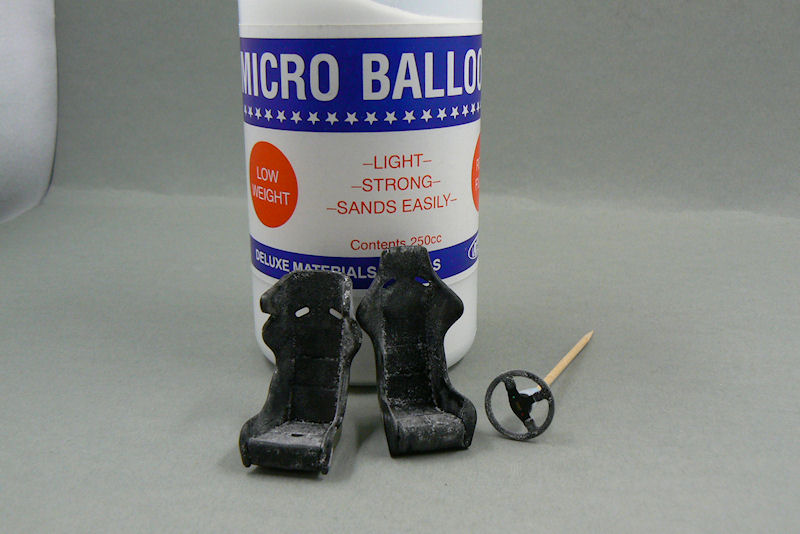
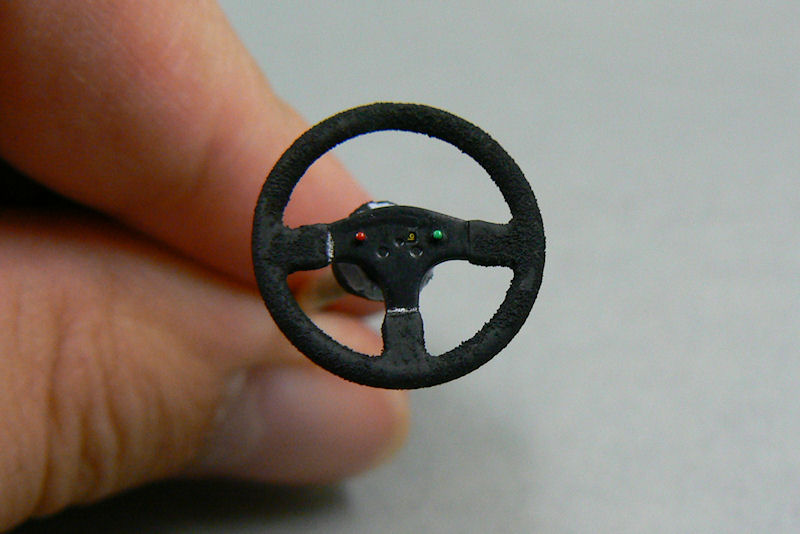

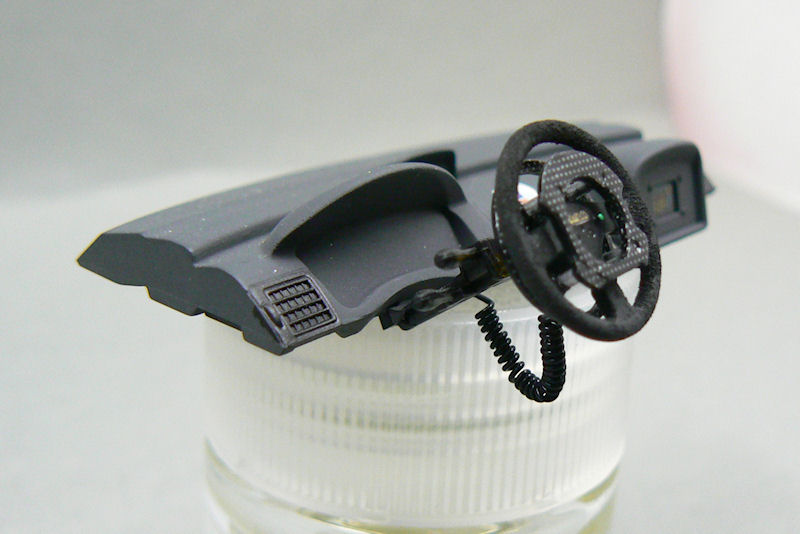
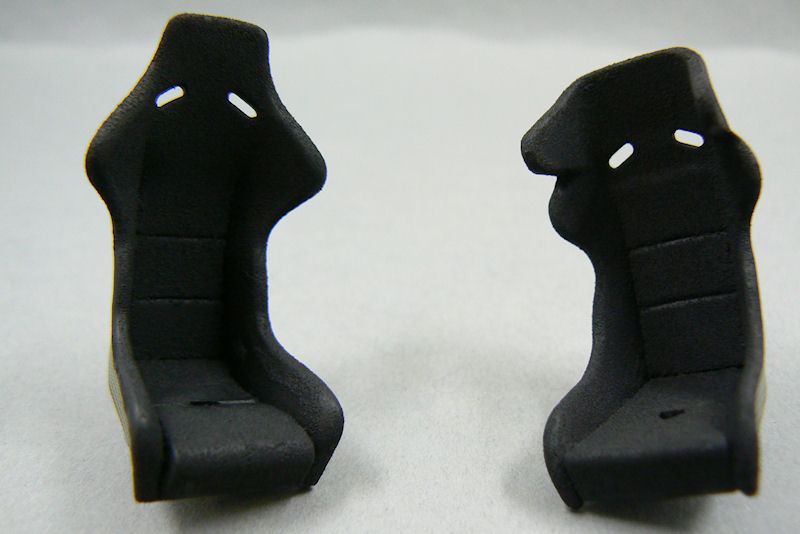


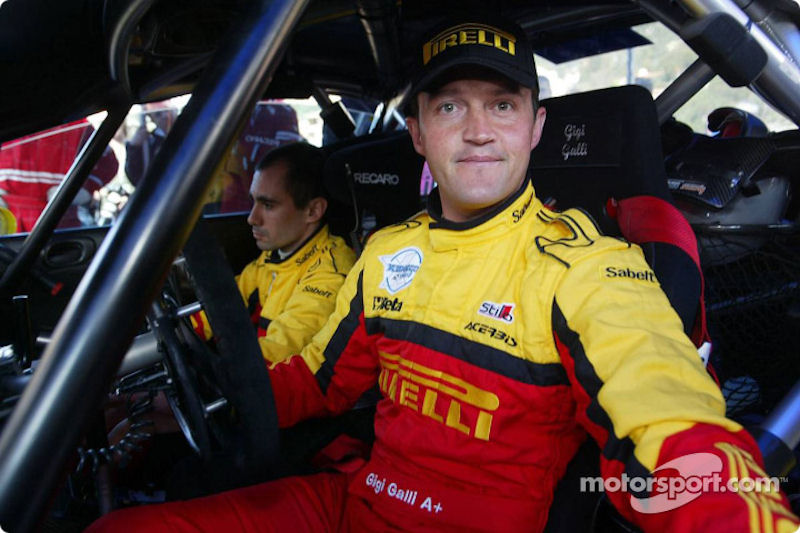
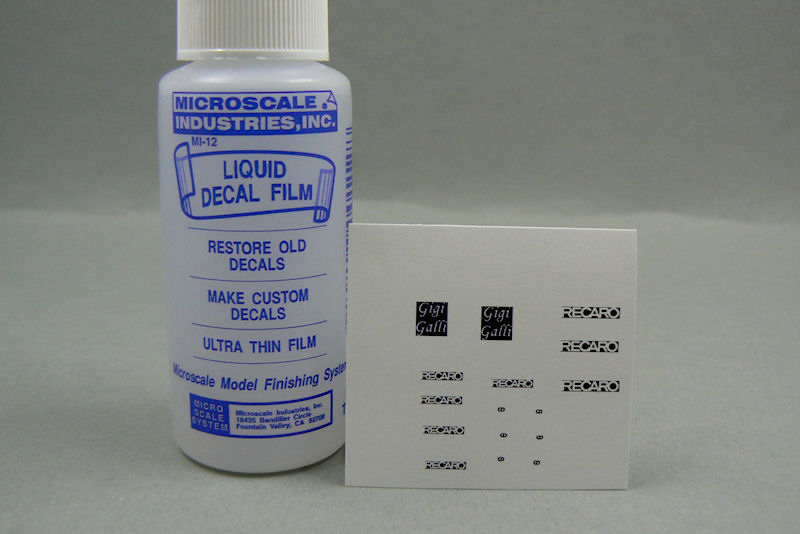
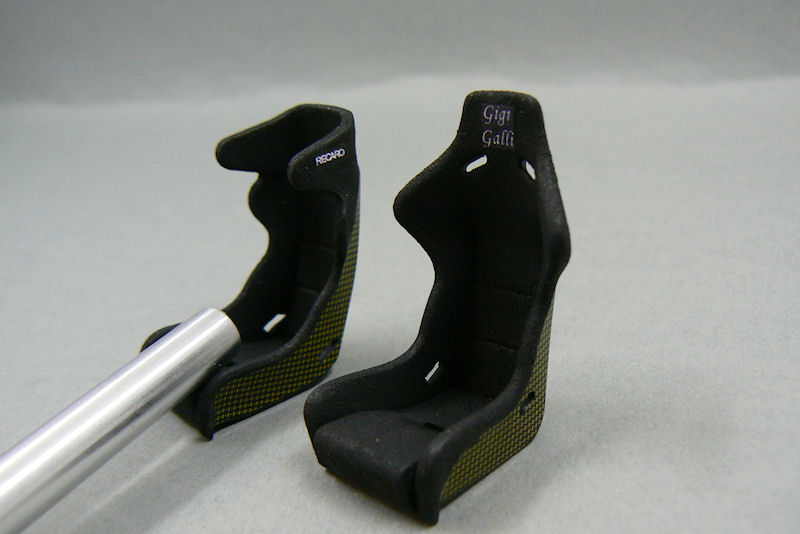
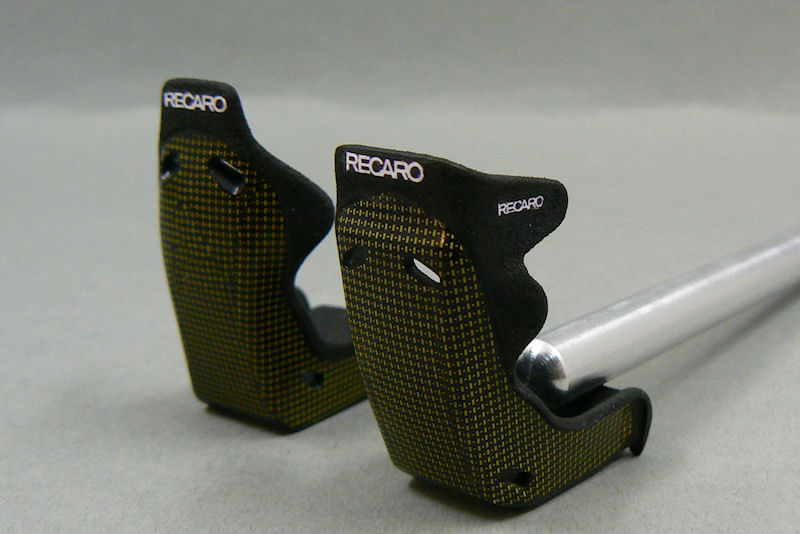
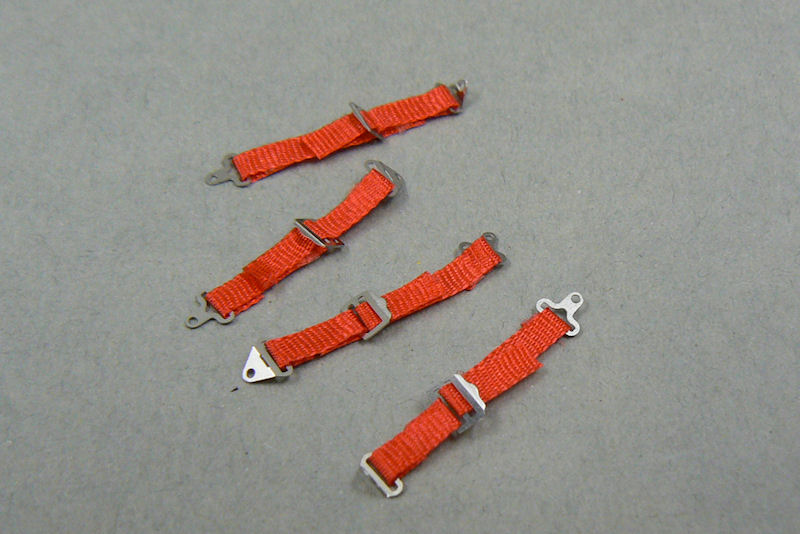
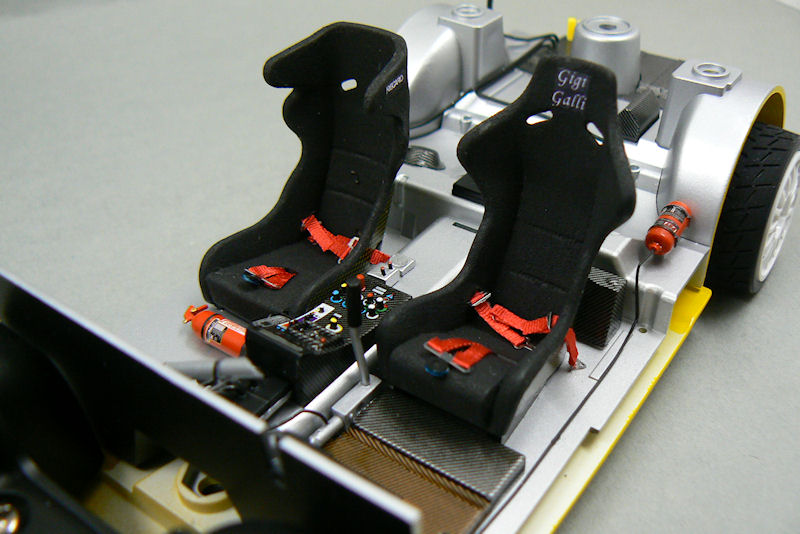
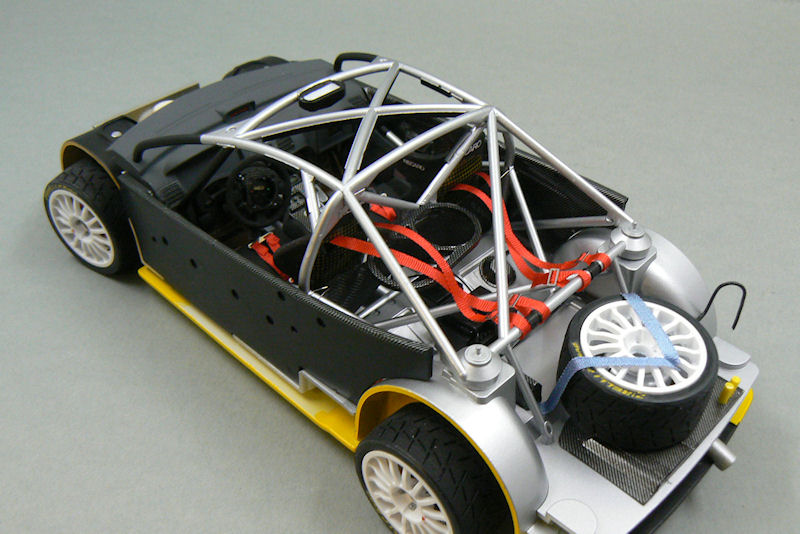
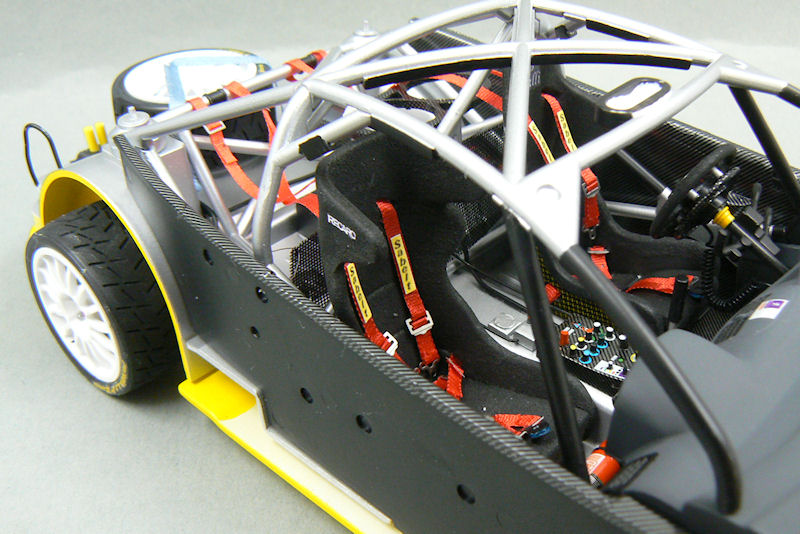

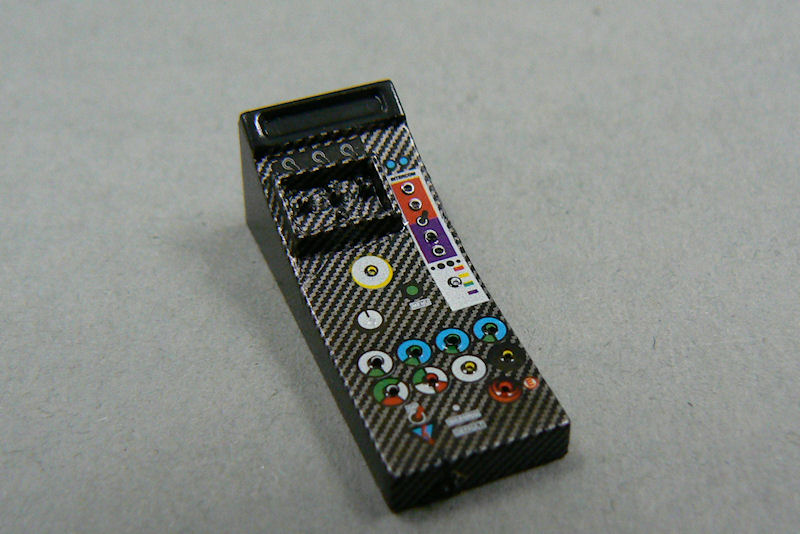
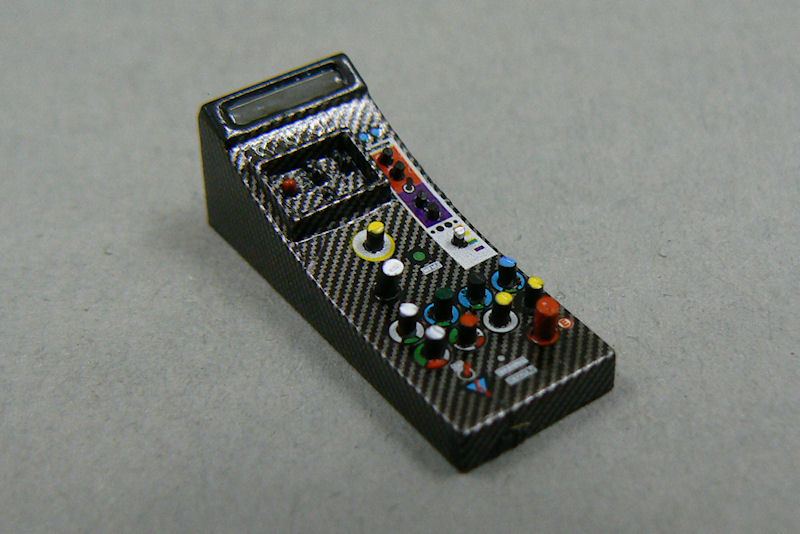
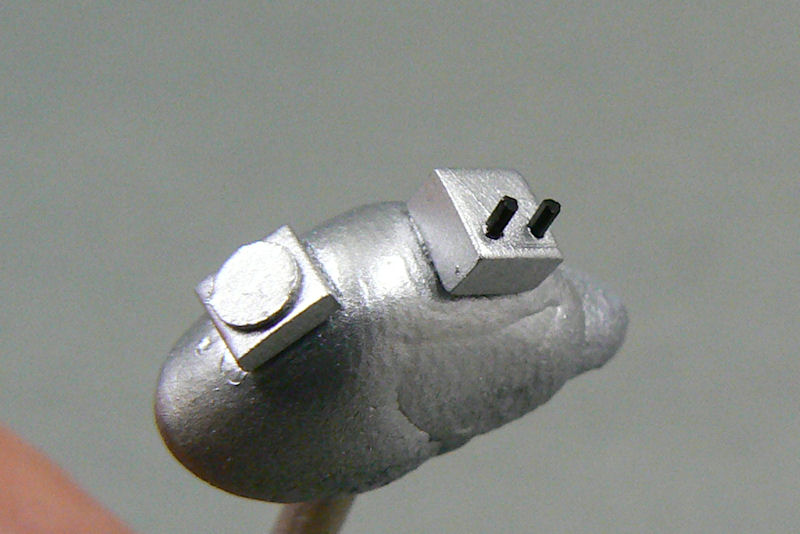
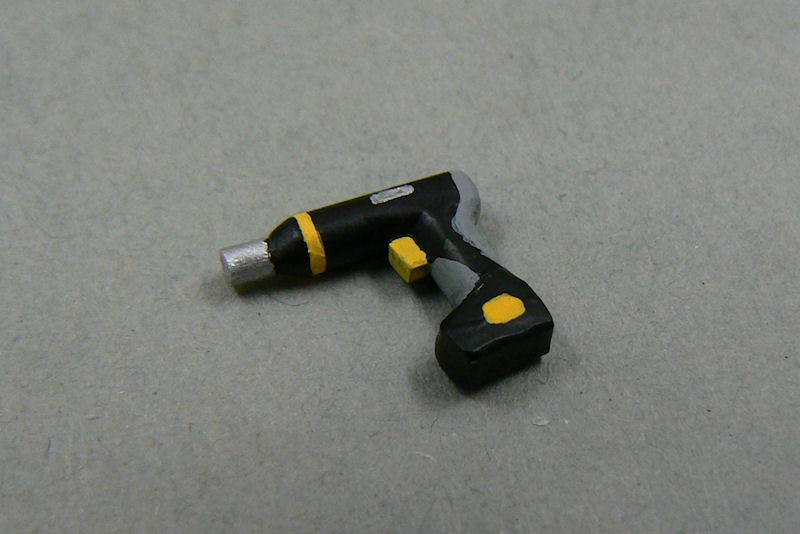
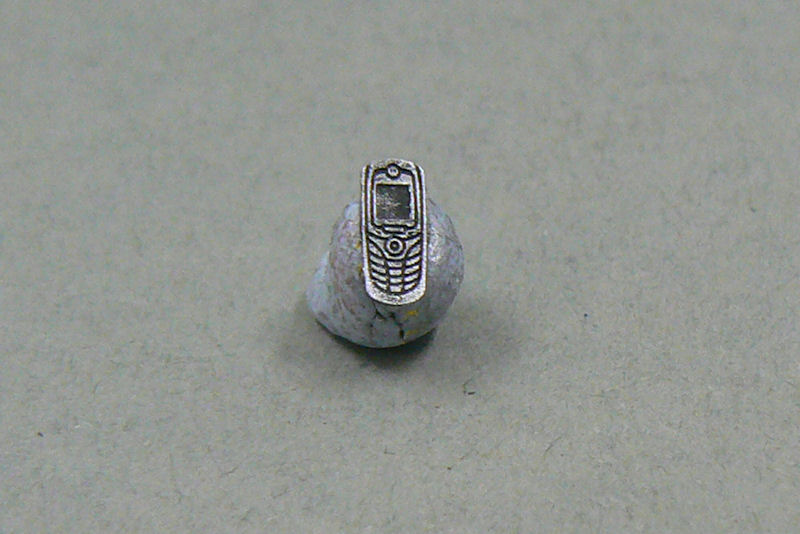

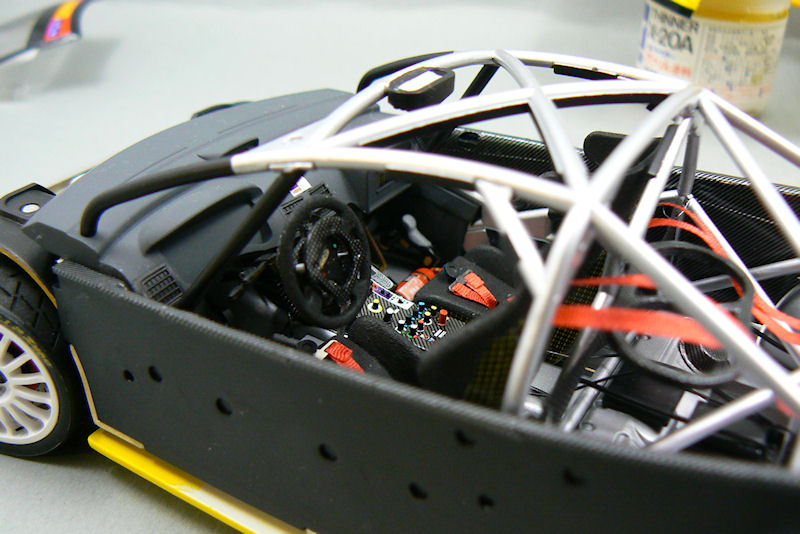
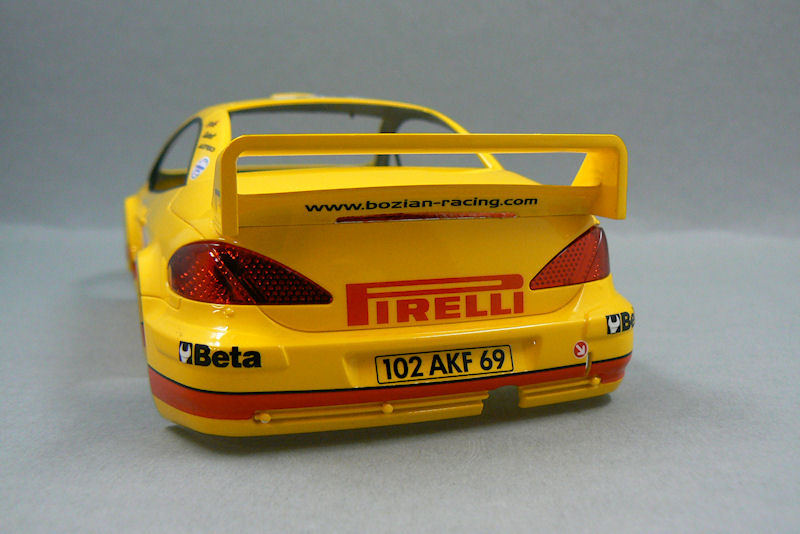
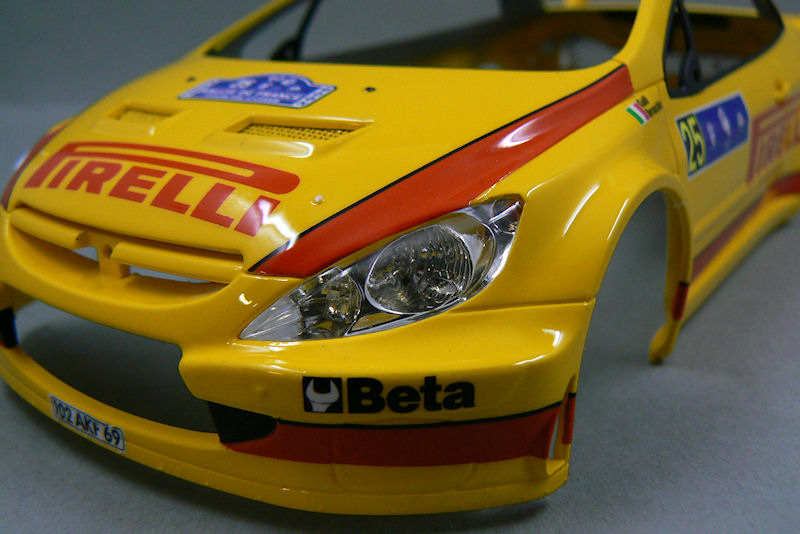
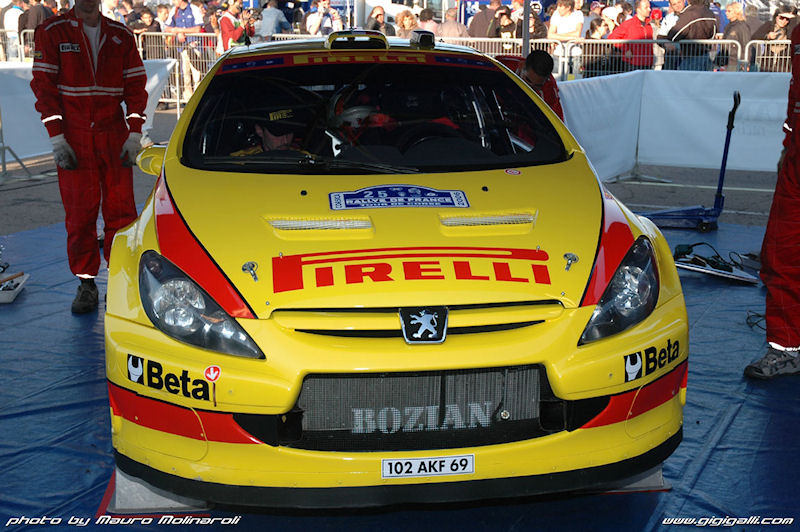
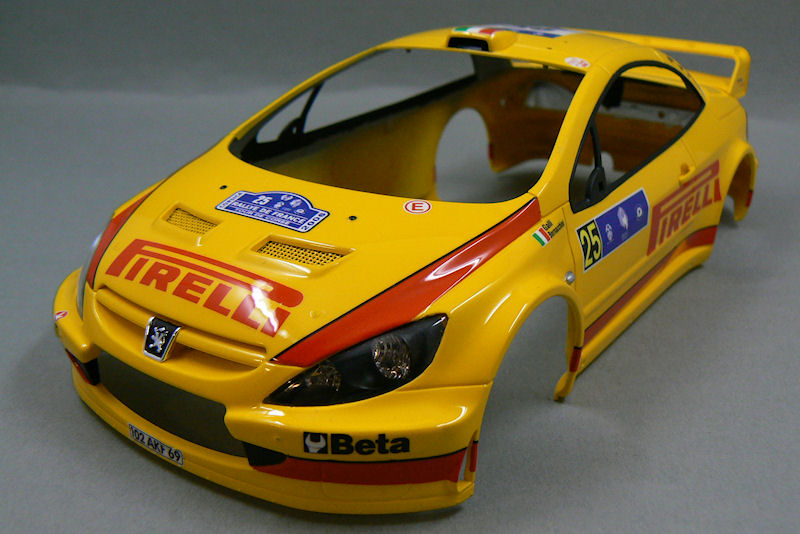


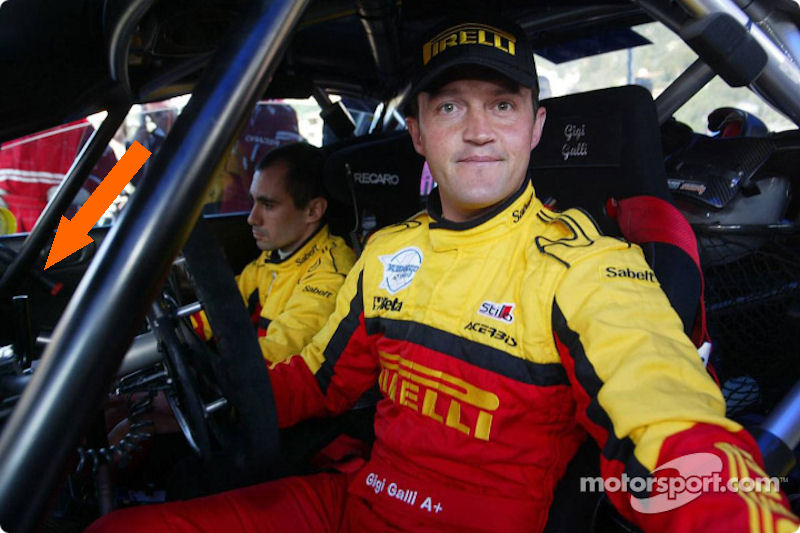
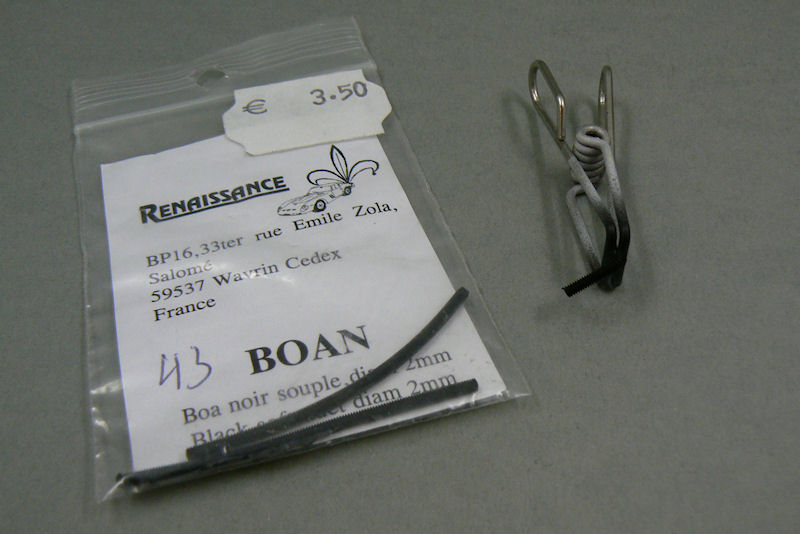
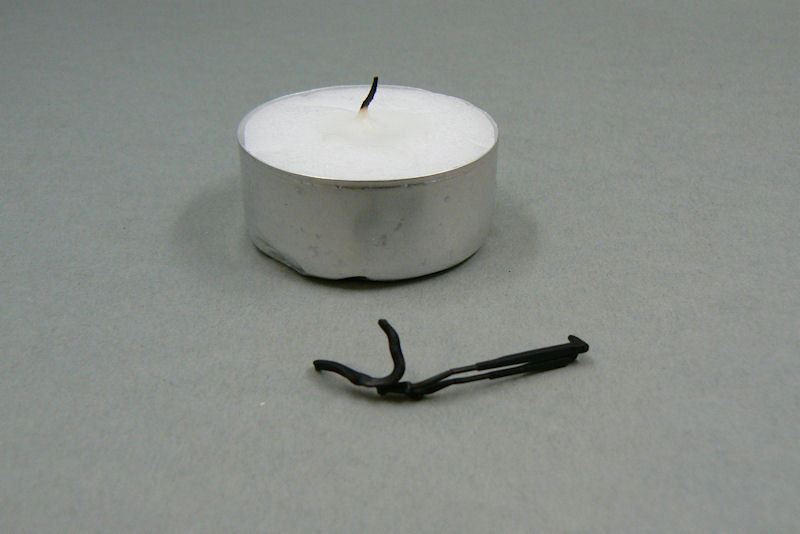
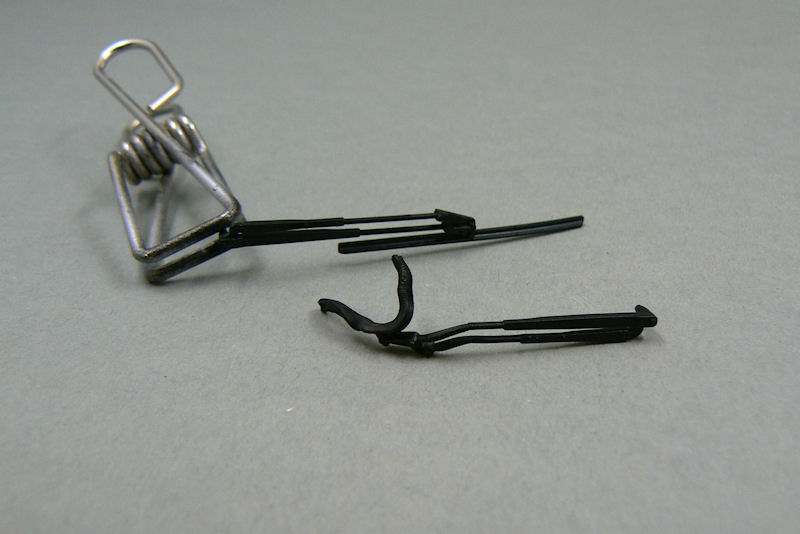
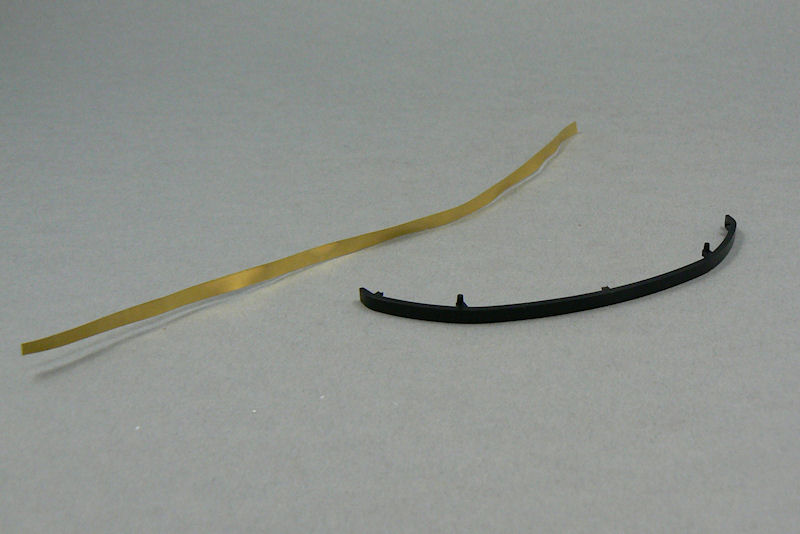
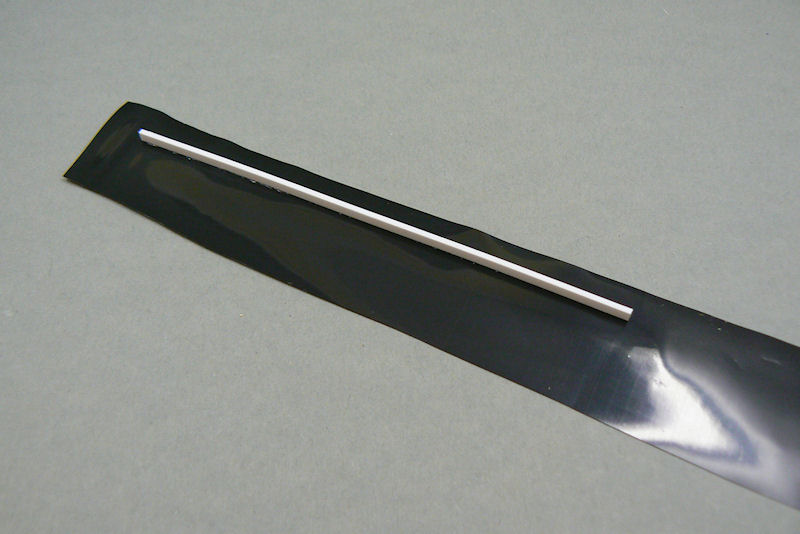
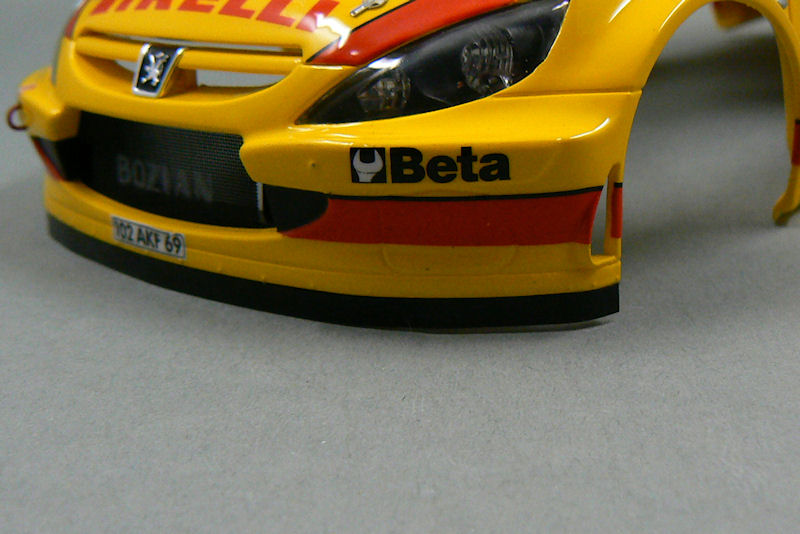
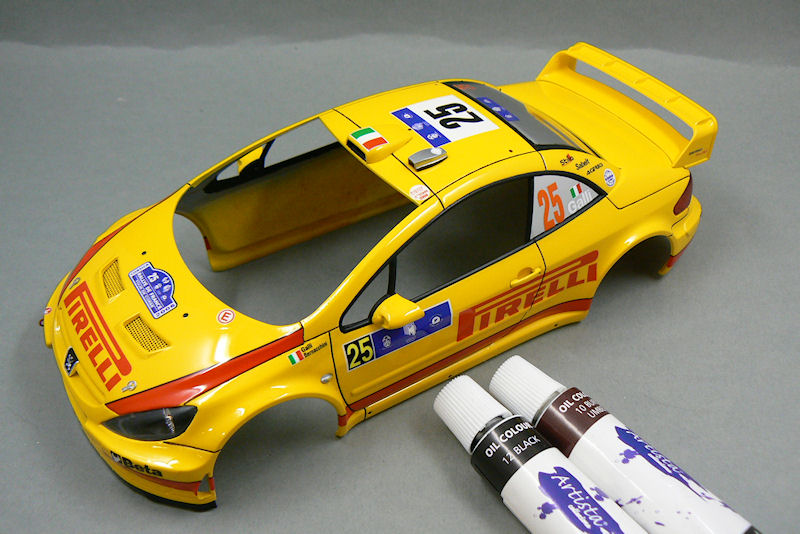
Comments
Post a Comment